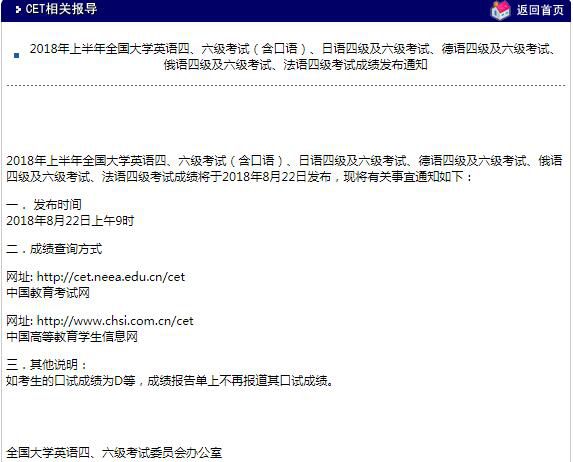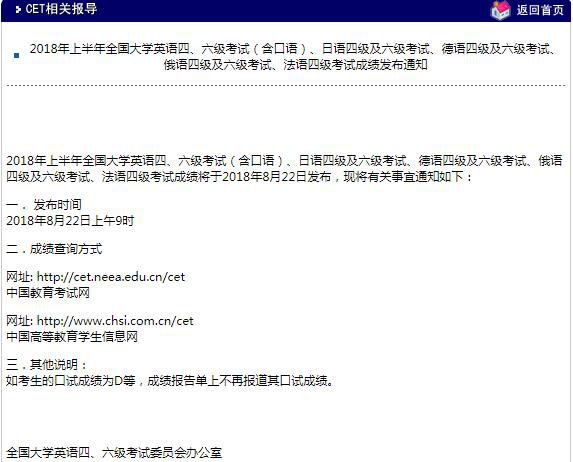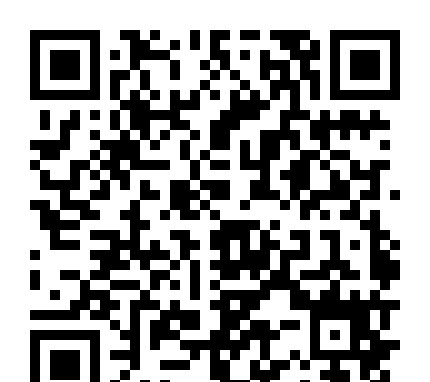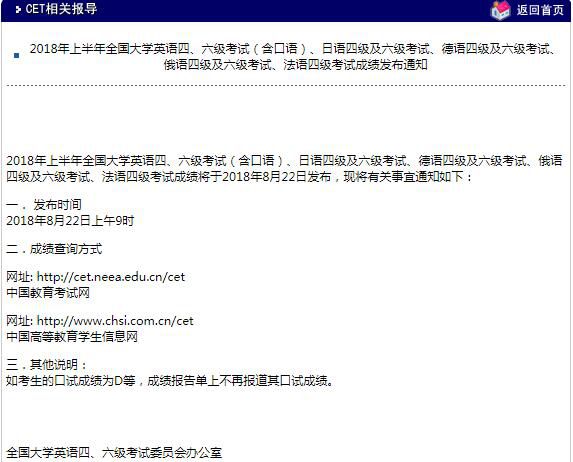2018年研究生入学统一考试英语(一)真题及答案解析
|
2018年全国硕士研究生入学统一考试 Section Ⅰ Use of English Trust is a tricky business. On the one hand, it's a necessary condition __1__ many worthwhile things: child care, friendships, etc. On the other hand, putting your __2__, in the wrong place often carries a high __3__. __4__, why do we trust at all? Well, because it feels good. __5__ people place their trust in an individual or an institution, their brains release oxytocin, a hormone that __6__ pleasurable feelings and triggers the herding instruct that prompts humans to __7__ with one another. Scientists have found that exposure __8__ this hormone puts us in a trusting __9__: In a Swiss study, researchers sprayed oxytocin into the noses of half the subjects; those subjects were ready to lend significantly higher amounts of money to strangers than were their __10__ who inhaled something else. __11__ for us, we also have a sixth sense for dishonesty that may __12__ us. A Canadian study found that children as young as 14 months can differentiate __13__ a credible person and a dishonest one. Sixty toddlers were each __14__ to an adult tester holding a plastic container. The tester would ask, "What's in here?" before looking into the container, smiling, and exclaiming, "Wow!" Each subject was then invited to look __15__. Half of them found a toy; the other half __16__ the container was empty-and realized the tester had __17__ them. Among the children who had not been tricked, the majority were __18__ to cooperate with the tester in learning a new skill, demonstrating that they trusted his leadership. __19__, only five of the 30 children paired with the "__20__" tester participated in a follow-up activity.
Text 1 Don't dismiss that possibility entirely. About half of U.S. jobs are at high risk of being automated, according to a University of Oxford study, with the middle class disproportionately squeezed. Lower-income jobs like gardening or day care don't appeal to robots. But many middle-class occupations-trucking, financial advice, software engineering—have aroused their interest, or soon will. The rich own the robots, so they will be fine. This isn't to be alarmist. Optimists point out that technological upheaval has benefited workers in the past. The Industrial Revolution didn't go so well for Luddites whose jobs were displaced by mechanized looms, but it eventually raised living standards and created more jobs than it destroyed. Likewise, automation should eventually boost productivity, stimulate demand by driving down prices, and free workers from hard, boring work. But in the medium term, middle-class workers may need a lot of help adjusting. The first step, as Erik Brynjolfsson and Andrew McAfee argue in The Second Machine Age, should be rethinking education and job training. Curriculums—from grammar school to college—should evolve to focus less on memorizing facts and more on creativity and complex communication. Vocational schools should do a better job of fostering problem-solving skills and helping students work alongside robots. Online education can supplement the traditional kind. It could make extra training and instruction affordable. Professionals trying to acquire new skills will be able to do so without going into debt. The challenge of coping with automation underlines the need for the U.S. to revive its fading business dynamism: Starting new companies must be made easier. In previous eras of drastic technological change, entrepreneurs smoothed the transition by dreaming up ways to combine labor and machines. The best uses of 3D printers and virtual reality haven't been invented yet. The U.S. needs the new companies that will invent them. Finally, because automation threatens to widen the gap between capital income and labor income, taxes and the safety net will have to be rethought. Taxes on low-wage labor need to be cut, and wage subsidies such as the earned income tax credit should be expanded: This would boost incomes, encourage work, reward companies for job creation, and reduce inequality. Technology will improve society in ways big and small over the next few years, yet this will be little comfort to those who find their lives and careers upended by automation. Destroying the machines that are coming for our jobs would be nuts. But policies to help workers adapt will be indispensable. 21. Who will be most threatened by automation? 22. Which of the following best represent the author's view? 23. Education in the age of automation should put more emphasis on ________. 24. The author suggests that tax policies be aimed at ________. 25. In this text, the author presents a problem with ________. 解析: 23. 选A。 根据第四段Curriculums —from grammar school to college- should evolve to focus less on memorizing facts and more on creativity and complex communication. 24. 选D. 根据第六段Finally, because automation threatens to widen the gap between capital income and labor income, taxes and the safety net will have to be rethought.可知是为了防止收入差距扩大。 25. 选B. 文中作者提出了automation的问题,然后主要围绕具体的解决方式展开。 Text 2 Most Americans rely on social media to check daily headlines. Yet as distrust has risen toward all media, people may be starting to beef up their media literacy skills. Such a trend is badly needed. During the 2016 presidential campaign, nearly a quarter of web content shared by Twitter users in the politically critical state of Michigan was fake news, according to the University of Oxford. And a survey conducted for BuzzFeed News found 44 percent of Facebook users rarely or never trust news from the media giant. Young people who are digital natives are indeed becoming more skillful at separating fact from fiction in cyberspace. A Knight Foundation focus-group survey of young people between ages 14and24 found they use "distributed trust" to verify stories. They cross-check sources and prefer news from different perspectives—especially those that are open about any bias. "Many young people assume a great deal of personal responsibility for educating themselves and actively seeking out opposing viewpoints," the survey concluded. Such active research can have another effect. A 2014 survey conducted in Australia, Britain, and the United States by the University of Wisconsin-Madison found that young people's reliance on social media led to greater political engagement. Social media allows users to experience news events more intimately and immediately while also permitting them to re-share news as a projection of their values and interests. This forces users to be more conscious of their role in passing along information. A survey by Barna research group found the top reason given by Americans for the fake news phenomenon is "reader error," more so than made-up stories or factual mistakes in reporting. About a third say the problem of fake news lies in "misinterpretation or exaggeration of actual news" via social media. In other words, the choice to share news on social media may be the heart of the issue. "This indicates there is a real personal responsibility in counteracting this problem," says Roxanne Stone, editor in chief at Barna Group. So when young people are critical of an over-tweeting president, they reveal a mental discipline in thinking skills—and in their choices on when to share on social media. 26. According to the Paragraphs 1 and 2, many young Americans cast doubts on ________. 27. The phrase "beer up" (Line 2, Para. 2) is closest in meaning to ________. 28. According to the knight foundation survey, young people ________. 29. The Barna survey found that a main cause for the fake news problem is ________. 30. Which of the following would be the best title for the text? 解析: Text 3 In Arizona v. United States, the majority overturned three of the four contested provisions of Arizona's controversial plan to have state and local police enforce federal immigration law. The Constitutional principles that Washington alone has the power to "establish a uniform Rule of Naturalization" and that federal laws precede state laws are noncontroversial. Arizona had attempted to fashion state policies that ran parallel to the existing federal ones. Justice Anthony Kennedy, joined by Chief Justice John Roberts and the Court's liberals, ruled that the state flew too close to the federal sun. On the overturned provisions the majority held the congress had deliberately "occupied the field", and Arizona had thus intruded on the federal's privileged powers. However, the Justices said that Arizona police would be allowed to verify the legal status of people who come in contact with law enforcement. That's because Congress has always envisioned joint federal-state immigration enforcement and explicitly encourages state officers to share information and cooperate with federal colleagues. Two of the three objecting Justice—Samuel Alito and Clarence Thomas—agreed with this Constitutional logic but disagreed about which Arizona rules conflicted with the federal statute. The only major objection came from Justice Antonin Scalia, who offered an even more robust defense of state privileges going back to the Alien and Sedition Acts. The 8-0 objection to President Obama turns on what Justice Samuel Alito describes in his objection as "a shocking assertion of federal executive power". The White House argued that Arizona's laws conflicted with its enforcement priorities, even if state laws complied with federal statutes to the letter. In effect, the White House claimed that it could invalidate any otherwise legitimate state law that it disagrees with. Some powers do belong exclusively to the federal government, and control of citizenship and the borders is among them. But if Congress wanted to prevent states from using their own resources to check immigration status, it could. It never did so. The administration was in essence asserting that because it didn't want to carry out Congress's immigration wishes, no state should be allowed to do so either. Every Justice rightly rejected this remarkable claim. 31. What is true of the agreement between the NHS and DeepMind? 32. The NHS trust responded to Denham's verdict with ______. 33. The author argues in Paragraph 2 that ________. 34. According to the last paragraph, the real worry arising from this deal is ________. 35. The author's attitude toward the application of AI to healthcare is ______. 解析: And interest groups ranging from postal unions to greeting-card makers exert self-interested pressure on the USPS's ultimate overseer-Congress-insisting that whatever else happens to the Postal Service, aspects of the status quo they depend on get protected. This is why repeated attempts at reform legislation have failed in recent years, leaving the Postal Service unable to pay its bills except by deferring vital modernization. Now comes word that everyone involved—Democrats, Republicans, the Postal Service, the unions and the system's heaviest users—has finally agreed on a plan to fix the system. Legislation is moving through the House that would save USPS an estimated $28.6 billion over five years, which could help pay for new vehicles, among other survival measures. Most of the money would come from a penny-per-letter permanent rate increase and from shifting postal retirees into Medicare. The latter step would largely offset the financial burden of annually pre-funding retiree health care, thus addressing a long-standing complaint by the USPS and its union. If it clears the House, this measure would still have to get through the Senate – where someone is bound to point out that it amounts to the bare, bare minimum necessary to keep the Postal Service afloat, not comprehensive reform. There's no change to collective bargaining at the USPS, a major omission considering that personnel accounts for 80 percent of the agency's costs. Also missing is any discussion of eliminating Saturday letter delivery. That common-sense change enjoys wide public support and would save the USPS $2 billion per year. But postal special-interest groups seem to have killed it, at least in the House. The emerging consensus around the bill is a sign that legislators are getting frightened about a politically embarrassing short-term collapse at the USPS. It is not, however, a sign that they're getting serious about transforming the postal system for the 21st century. 36. The financial problem with the USPS is caused partly by ________. 37. According to Paragraph 2, the USPS fails to modernize itself due to ________. 38. The long-standing complaint by the USPS and its unions can be addressed by ________. 39. In the last paragraph, the author seems to view legislators with ______. 40. Which of the following would be the best title for the text? 解析: Part B [B] Completed in 1875, the State Department's south wing was the first to be occupied, with its elegant four-story library (completed in 1876), Diplomatic Reception Room, and Secretary's office decorated with carved wood, Oriental rugs, and stenciled wall patterns. The Navy Department moved into the east wing in 1879, where elaborate wall and ceiling stenciling and marquetry floors decorated the office of the Secretary. [C] The State, War, and Navy Building, as it was originally known, housed the three Executive Branch Departments most intimately associated with formulating and conducting the nation's foreign policy in the last quarter of the nineteenth century and the first quarter of the twentieth century-the period when the United States emerged as an international power. The building has housed some of the nation's most significant diplomats and politicians and has been the scene of many historic events. [D] Many of the most celebrated national figures have participated in historical events that have taken place within the EEOB's granite walls. Theodore and Franklin D. Roosevelt, William Howard Taft, Dwight D. Eisenhower, Lyndon B. Johnson, Gerald Ford, and George H. W. Bush all had offices in this building before becoming president. It has housed 16 Secretaries of the Navy, 21 Secretaries of War, and 24 Secretaries of State. Winston Churchill once walked its corridors and Japanese emissaries met here with Secretary of State Cordell Hull after the bombing of Pearl Harbor. [E] The Eisenhower Executive Office Building (EEOB) commands a unique position in both the national history and the architectural heritage of the United States. Designed by Supervising Architect of the Treasury, Alfred B. Mullett, it was built from 1871 to 1888 to house the growing staffs of the State, War, and Navy Departments, and is considered one of the best examples of French Second Empire architecture in the country. [F] Construction took 17 years as the building slowly rose wing by wing. When the EEOB was finished, it was the largest office building in Washington, with nearly 2 miles of black and white tiled corridors. Almost all of the interior detail is of cast iron or plaster; the use of wood was minimized to insure fire safety. Eight monumental curving staircases of granite with over 4,000 individually cast bronze balusters are capped by four skylight domes and two stained glass rotundas. [G] The history of the EEOB began long before its foundations were laid. The first executive offices were constructed between 1799 and 1820. A series of fires (including those set by the British in 1814) and overcrowded conditions led to the construction of the existing Treasury Building. In 1866, the construction of the North Wing of the Treasury Building necessitated the demolition of the State Department building. 41. E 解析:
When Shakespeare was twelve years old the first public playhouse was built in London. For a time literature showed no interest in this public stage. Plays aiming at literary distinction were written for schools or court, or for the choir boys of St. Paul's and the royal chapel, who, however, gave plays in public as well as at court. (48) But the professional companies prospered in their permanent theaters, and university men with literary ambitions were quick to turn to these theaters as offering a means of livelihood. By the time that Shakespeare was twenty-five, Lyly, Peele, and Greece had made comedies that were at once popular and literary; Kyd had written a tragedy that crowded the pit; and Marlowe had brought poetry and genius to triumph on the common stage—where they had played no part since the death of Euripides. (49) A native literary drama had been created, its alliance with the public playhouse established, and at least some of its great traditions had been begun. The development of the Elizabethan drama for the next twenty-five years is of exceptional interest to students of literary history, for in this brief period, we may trace the beginning, growth, blossoming, and decay of many kinds of plays, and of many great careers. We are amazed today at the mere number of plays produced, as well as by the number of dramatists writing at the same time for this London of two hundred thousand inhabitants. (50) To realize how great was the dramatic activity, we must remember further that hosts of plays have been lost, and that probably there is no author of note whose entire work has survived. 46. 参考译文:在他出生之前,欧洲正在经历宗教戏剧的衰退,古典悲剧和喜剧催生了新的戏剧形式。 You should write about 100 words neatly on the ANSWER SHEET. 参考作文: The implication underlying this picture is rather thought-provoking: his confusion in fact mirrors hundreds of thousands of students’ dilemmas. Nowadays, many students in universities or colleges are not sure of what they want and where they will go in the future. As a result, they easily become anxious and helpless when choices confront them. What should we do? In my opinion, the most important thing is having a goal. It is crucial for us college students to understand what we actually want and what kind of men we want to be. And then follow your heart. If you have the ambition to be an expert in some fields, you will naturally choose the courses that are creative, informative and progressive rather than courses oriented to students who want just to dip into it for fun or credit. Otherwise, if your focus is on honing your work skills or just feeding yourselves early and supporting your family, you can just choose whichever subject you would like to successfully graduate and then hunt for jobs or establish your own career. |








